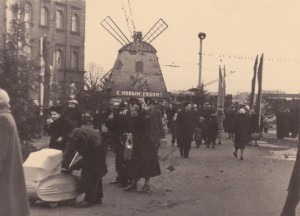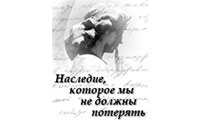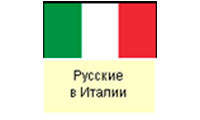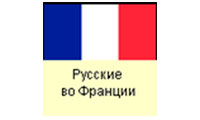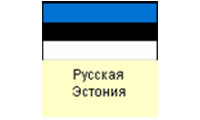The Old Believers of Riga
Arnold Podmazov
Riga Old Believers at the Turn of 19th and 20th Centuries
The end of the reign of Nicholas I was characterized by growing awareness that the reform was necessary both in the interior and foreign policy of the government. During the reign of Alexander II (1818–1881, reigned in 1856–1881) the serfdom was finally abolished, and the era of reforms began. Under these circumstances, the attitude of the authorities towards Old Believers was gradually changing. The Old Believers’ rights were still restricted by law, but the wave of persecutions had somewhat subsided.
During his work as an official of the Ministry of Education, Nikolay Leskov had gathered sufficient evidence describing the plight of Riga’s Old Believer population. Perhaps, it was with his assistance that in 1873 the Grebenshchikov Old Believer School was reopened. In fact, the school only existed due to financial support of the parishioners G. Lomonosov, Z. Belyaev, I. Tuzov, and M. Sokolov. There were 127 students, 88 of which studied free of charge. Since 1895, the school was working under the aegis of the almshouse. By this time the number of students has doubled: in 1898 there studied 210 students (117 boys and 93 girls). In the course of three years, children were studying the foundations of religion, liturgical music and church reading, as well as “secular” subjects: writing, calculus, history, and geography.
In 1874 the government issued a Law on the Old Believers’ marriages which recognizes the marriages contracted in the Old Believers’ churches. In 1883 a new law came out which allowed to conduct the Old Believers’ services legally, to organize new parishes, and to unseal the houses of prayer that were previously closed. However, the basic principles of the law were formulated imprecisely, which allowed the secular administration to interpret them according to their own discretion. Besides that, the resolution of any issue, such as the organization of a new parish or the removing of seals from a prayer house had to undergo a long process of approval from various state institutions, including the local Spiritual Consistory and the Holy Synod. The process could last for years and usually ended with no result.
The legal status of the Old Believers had radically changed after the Ukase of Nicholas II (1868–1918, reigned in 1894–1917) issued on April 17, 1905 “On the Strengthening the Foundations of Religious Tolerance”. In October of 1906, a new Ukase was adopted that expanded and specified the Old Believers’ rights. They were allowed to establish communities that had the status of a legal person, to build churches, to open elementary schools with the instruction in the faith in accordance with the Old Belief tradition. The spiritual fathers were made equal in their rights with the clergy of other confessions. Thus, the Old Believers’ church was given a status equal to other religions in the Empire.
The First All-Russian Council (Sobor) of the Pomorian Old Believers in 1909 was a historic event for all the Old Believers of Bespopovtsy tradition in the Russian Empire. For the first time in two hundred years of existence in dispersion, the Old Believers could publicly discuss the inner problems of the church caused both by the lack of a unified structure of spiritual administration and by specific regional character of the whole movement. The Old Believers from Riga took an active part in the organization of the Council. Among those who presented reports at the Council were A. I. Volovich, a teacher at the Grebenshchikov school and I. U. Vakonya, a religious teacher and spiritual father, the future Chair of the Grebenshchikov Community in 1951–1956. The Assembly attempted to centralize the church administration electing the Council of All-Russian Councils and Congresses, a Spiritual Commission and a School Commission.” I. U. Vakonya and A. I. Volovich were elected as members of the latter. Another Old Believer from Riga, D. E. Petrinin, was elected into the Spiritual Commission. A. I. Volovich had also taken active part in the work of the All-Russian Congress of Pomorians on Education which took place in Dvinsk (Daugavpils) in 1911. The Congress discussed the training teachers of religion for Old Believer communities, and preparation of school curricula for the Old Believer students.
The organizational centralization and consolidation was facilitated by the passing of the Statutes of the Riga Grebenshchikov Old Believers’ Community in December 1908. The Statues regulated all aspects of community life, it formulated the goals of the Riga Old Believers’ Community, as well as the means to achieve them. The Statute was published as a booklet and became a blueprint for other communities in Latvia.
The Riga Grebenshchikov Community was engaged in a wide range of charitable work, e.g., through the Society for Raising the Children of the Poor which was founded in 1909. According to the 1912 report, the Society had 24 boys and 27 girls under its care. The list of benefactors of the “Society” consists of about 50 names and some anonymous donors. Among the most influential donors to the “Society” and to the community in general were the merchants K. Makarov, I. Lashkov, M. Lashkov, S. Tuzov, A. Trifonov, P. Volkov, S. Dolgov, N. Volkov, and others.
The Old Believers’ Kuznetsov family was among the most renowned benefactors who were the owners of the Riga Porcelain and Faience Factory (founded in 1841). This family financed the building of a school for children of the factory workers (located at 2 Slavu Street; architect R. Schmeling) and the opening of a public library. The Kuznetsovs regularly contributed large sums of money for the development of the Old Believers’ community.
Vigorous religious and social activity of the Old Believers took place during the first decade after the publication of the 1905 Manifesto which granted civil rights and legal status to the Old Believers. In February of 1913, the residents of Sarkandaugava, Mīlgrāvis, and Mežaparks petitioned the Governor’s administration for the registration of a new Old Believers’ community in Riga. The request was granted, and the new community was registered under the name “The Riga Bespopovtsy Old Believers’ Community of Sarkandaugava, Mīlgrāvis, and Mežaparks”. The first chair of the Community Council was M. Nikitin, and among the council members were I. Fomin, N. Avdzionov, S. Stepanov, and T. Bogdanov.
The new legal status of the Old Believers’ communities stimulated the expansion of manifold public activity among the Old Believers of Riga. Aside from church communities, the Old Believers’ public societies and associations also became very active at this time. Especially significant was the Riga Old Believers’ Association for Mutual Aid and Education, founded in 1908 and in the 1920s renamed as the Old Believers’ Society in Latvia. F. Pavlov was its founder and first chairman, succeeded in 1915 by E. Pospelov. The goal of the Society was to unite the Old Believers of all denominations on the basis of mutual aid, charity, cultural and educational work. It was the first Old Believers’ organization of such kind in the Russian Empire. The Society’s goals found a fertile ground among the Old Believers and by 1911 the number of members reached 580, majority of whom were the Old Believers of the Bespopovtsy tradition. The Society started to work in publishing: in 1911, it published “The Old Believers’ Calendar for the Years 1911–1912.” The 128-page calendar included information about the history and contemporary situation of Riga’s Old Believers, as well as practical information that concerned secular life. The Society published an illustrated magazine The Old Rus (edited by E. Pospelov, it published 17 issues between 1911–1912). It became one of the Old Believers’ first almanacs which sought to inform its readers with regards to the history and most important events in the life of entire Old Believers’ communities. The Society invited distinguished speakers (scholars, authors, etc.) to give lectures and it also founded its own library. The work of the Society was cut short with the outbreak of World War I.
Content
- Introduction
- Schism and “Old Belief”
- Beginnings of the Old Believers on the territory of Latvia
- Confessional Characteristics of Old Believers in Latvia
- Old Believers’ Church Building and Liturgy
- Books and Book Culture
- Iconographic Traditions of Riga Old Believers
- Pomorian Old Believer Traditions of the Art of Copper Casting
- Old Believer Churches in Riga
- Old Believer Societies in Riga
- Old Russian Residents of Riga and Old Believers in the 18th century
- The Years of Prosperity and the Years of Misery: Riga’s Old Believers in the 19th Century
- Riga Old Believers at the Turn of 19th and 20th Centuries
- Riga Old Believers in the Independent Latvia (1918–1940)
- Riga Old Believers During the Soviet Period (1940–1941, 1944–1991)
- Riga Old Believers after the Restoration of Latvia’s Independence
- Photogallery
- About the Project. The Old Believers of Riga: 250 Years of Cultural Historical Experience


